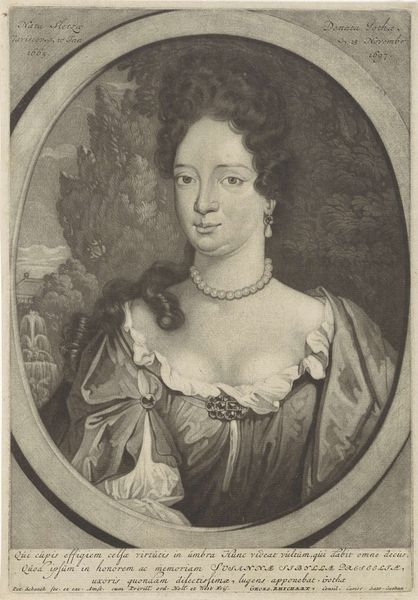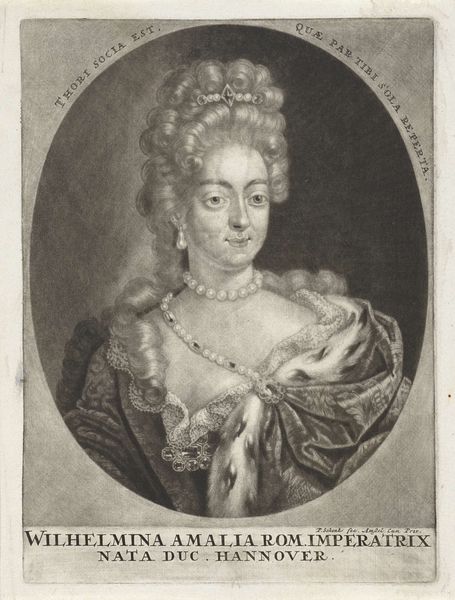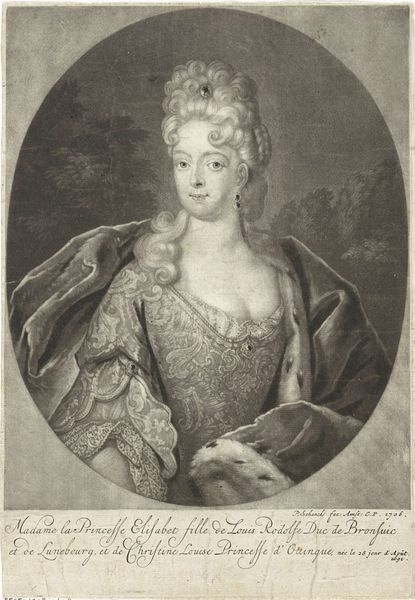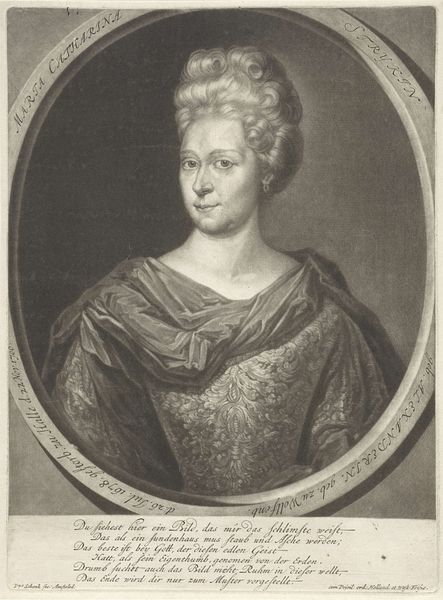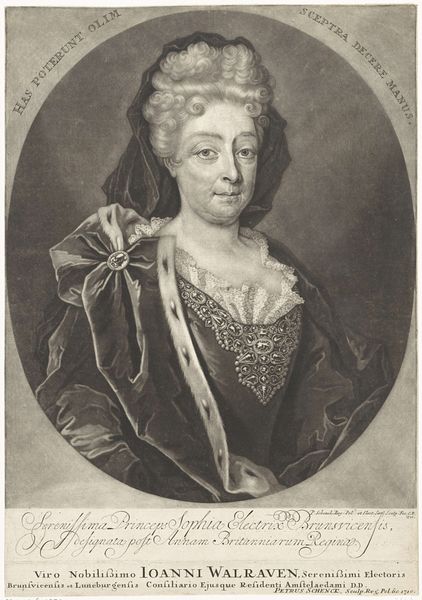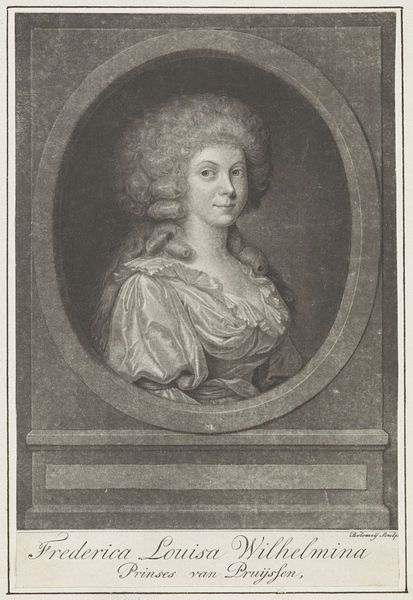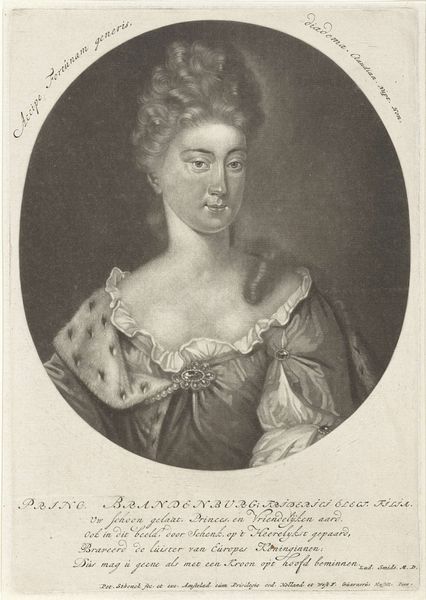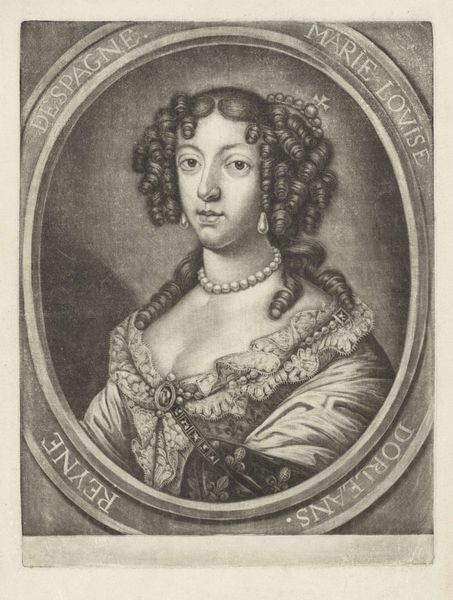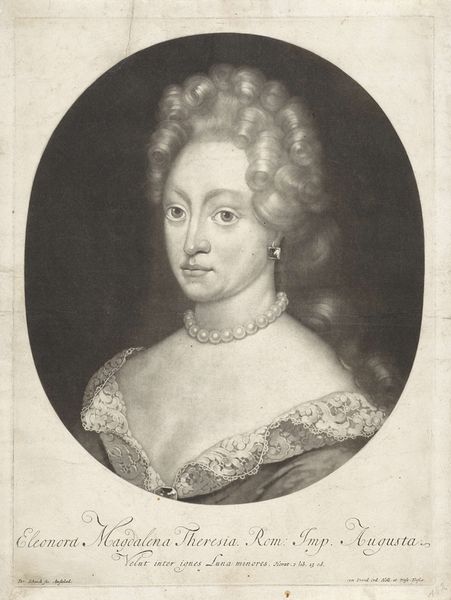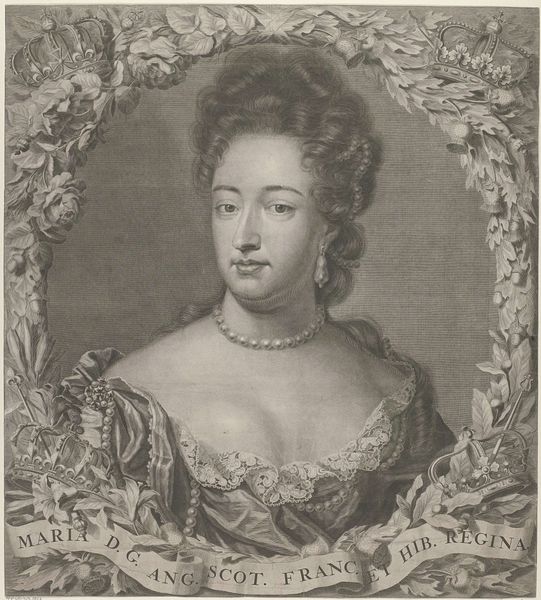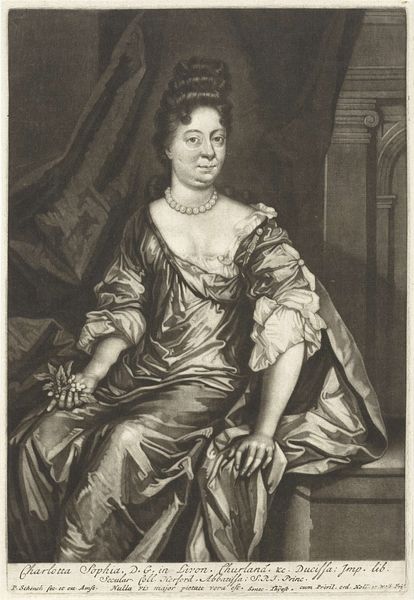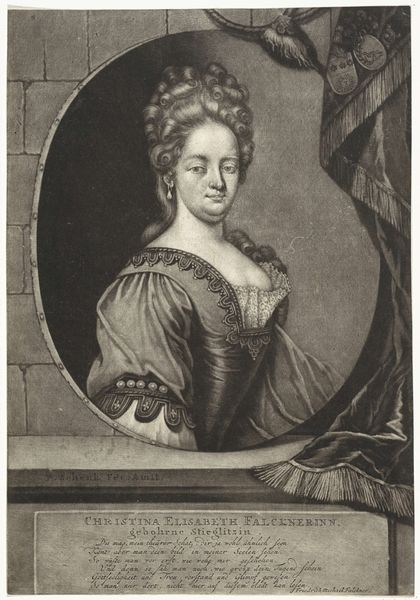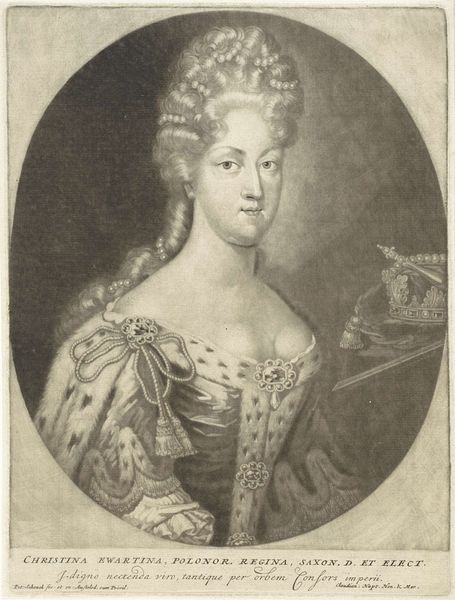
engraving
#
portrait
#
baroque
#
engraving
Dimensions: height 250 mm, width 175 mm
Copyright: Rijks Museum: Open Domain
Editor: Here we have Pieter Schenk’s "Portret van Elisabeth Juliana Wermuth", an engraving from 1701. The sitter's direct gaze and elaborate clothing suggest a person of status, but the print itself has an ephemeral, almost dreamlike quality. How do you interpret this work? Curator: Look closely at the phrases framing her. “Cor Gratiarum,” Heart of graces. “Flos Venustatis Merus,” a pure flower of loveliness. She’s presented as an embodiment of virtue and beauty. Notice how her hand gently rests on her chest, near a glimpse of skin, an intriguing visual motif during the Baroque. The pearl and the silk is used for social signalling and also speaks about moral characteristics in portraiture. Editor: So, beyond just being a portrait, it's about conveying ideas about Elisabeth Juliana's character and place in society? Curator: Precisely. Prints like this allowed for the wider dissemination of images and ideals. What memories and values were they trying to cultivate through such imagery? The gaze is a strong attribute as it evokes a connection to the past. But her expression almost seems burdened, don’t you think? Is it the weight of the expectation or social constraints on women in those times that might suggest it? Editor: I never would have considered those inscriptions or the gesture as more than decorative elements. I guess everything really does contribute to a deeper understanding. Curator: Visual culture operates in a system. Recognizing recurring symbols unlocks narratives encoded within the imagery.
Comments
No comments
Be the first to comment and join the conversation on the ultimate creative platform.

